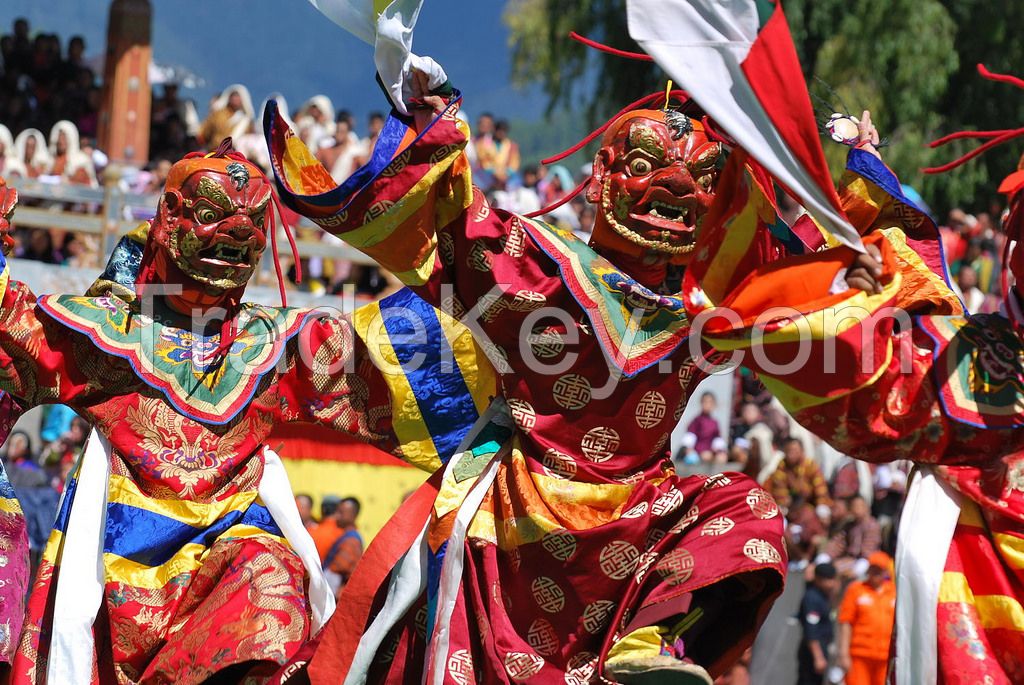
FOB Price
Obtenir le dernier prix330 / Pack
|Minimum Order
Localit�:
-
Prix de commande minimale:
Commande minimale:
100 Pack
Packaging Detail:
-
Delivery Time:
-
Supplying Ability:
-
Payment Type:
Other
Bhutan
Personne à contacter Ms. WorldTour
Changlam, Thimphu, Thimphu
One of the biggest festivals in the country is the Thimphu Tshechu. This festival is held in the capital city for three days beginning on *0th day of the 8th month of lunar calendar. This Tshechu is witnessed by thousands of people many of which travel from neighboring Dzongkhags (districts) to attend the festivities. The actual Tshechu is preceded by days and nights of prayer and rituals to invoke the gods.
When it was initiated by the 4th Desi, Gyalse Tenzin Rabgay in ***7 the Tshechu consisted of only a few dances being performed strictly by monks. These were the Zhana chham and the Zhana Nga chham (Dances of the *1 Black Hats), Durdag (Dance of the Lords of the Cremation Ground), and the Tungam chham (Dance of the Terrifying Deities).
The Thimphu Tshechu underwent a change in the ***0s, when the third King Jigme Dorji Wangchuck, introduced numerous Boed chhams (mask dances performed by lay monks). These additions added colour and variation to the festival without compromising its spiritual significance. Mask dances like the Guru Tshengye (Eight Manifestations of Guru), Shaw Shachi (Dance of the Stags) are enjoyed because they are similar to stage-theater.
Equally important are the Atsaras, who are more than just mere clowns. The Atsaras are the dupthobs (acharyas), who provide protection. The dances and the jesting of the Atsaras are believed to entrance evil forces and prevent them from causing harm during Tshechus. Modern Atsaras also perform short skits to disseminate health and social awareness messages.
To farmers, the Tshechu is also
seen as a break from farm life. Its an occasion to celebrate,
receive blessings and pray for health and happiness.